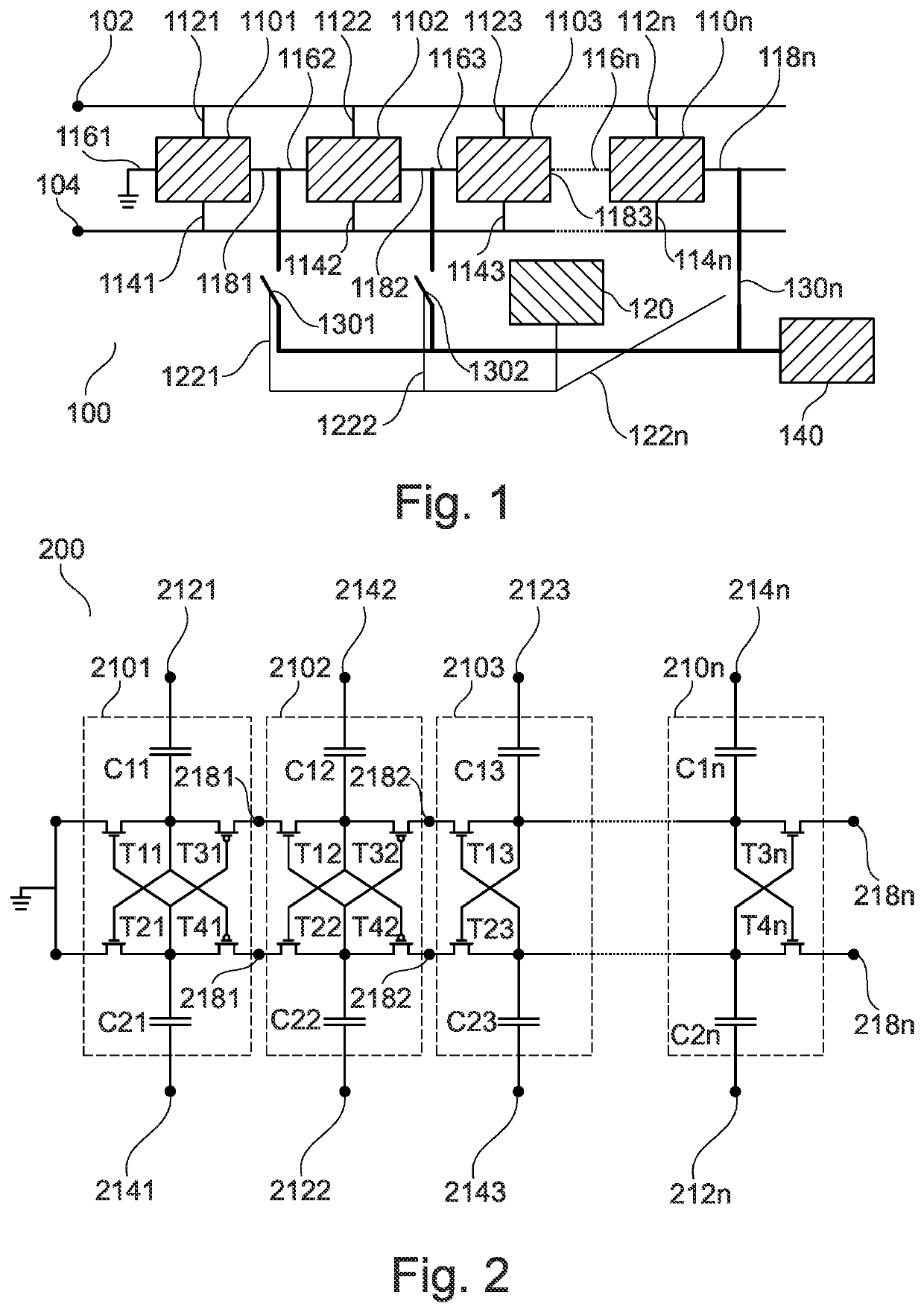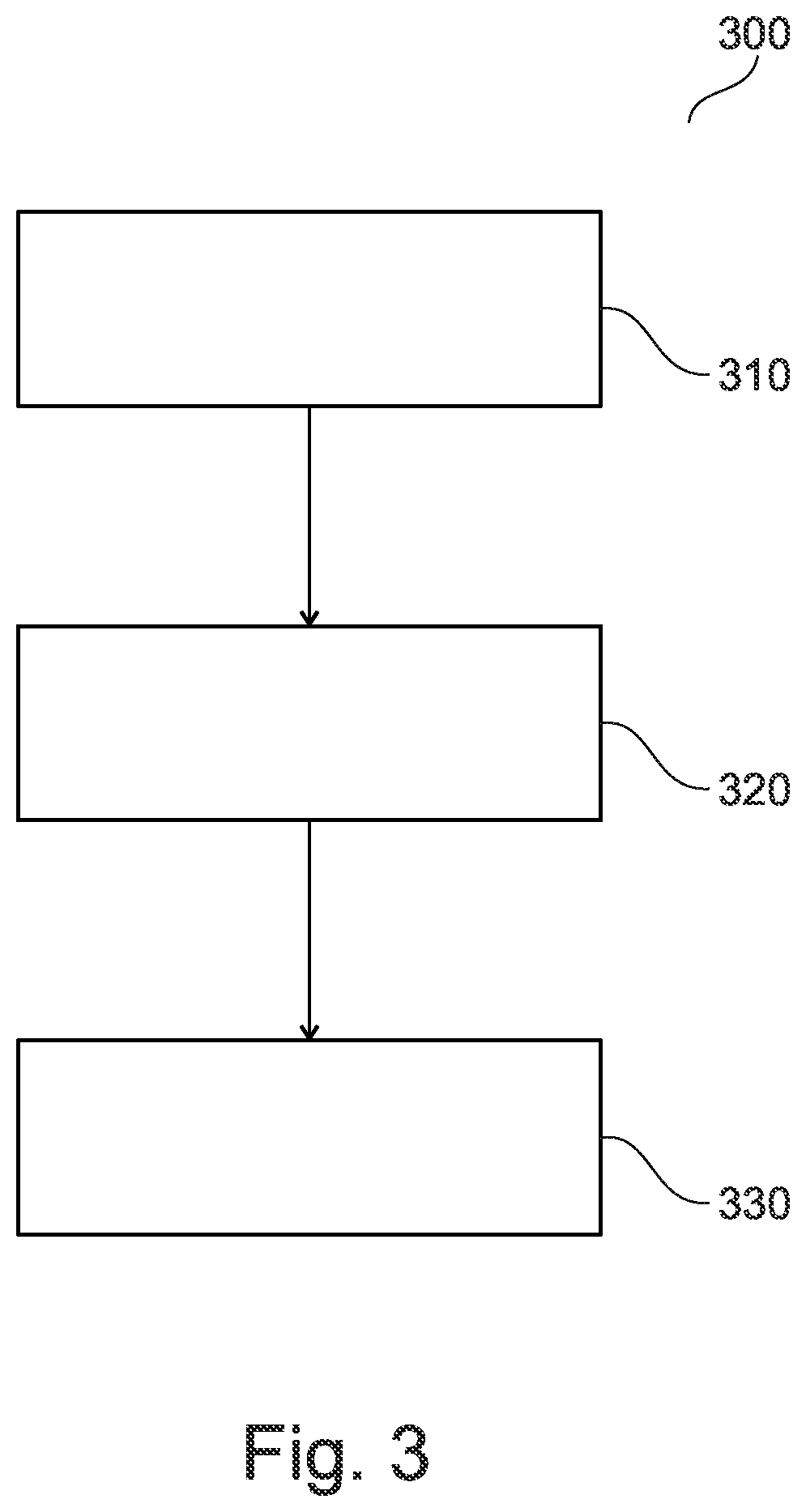Rectifier circuits and corresponding methods for RFID devices
a rectifier circuit and rectifier technology, applied in the direction of instruments, dc-dc conversion, apparatus without intermediate ac conversion, etc., can solve the problems of significant reduction of the return link performance and the strength of the signal received by the reader device, and achieve the effect of ensuring efficient return link performance, constant impedance, and avoiding decoupling effects
- Summary
- Abstract
- Description
- Claims
- Application Information
AI Technical Summary
Benefits of technology
Problems solved by technology
Method used
Image
Examples
Embodiment Construction
[0042]The illustration in the drawing is schematic. It is noted that in different figures, similar or identical elements are provided with the same reference signs or with reference signs, which differ only within the first digit.
[0043]FIG. 1 shows a block diagram of a rectifier circuit 100 for an RFID tag according to an embodiment. The rectifier circuit 100 comprises a pair of antenna input terminals 102, 104 configured to receive an input signal from an RFID tag antenna (not shown), a plurality of charge pump stages 1101, 1102, 1103, 110n coupled in cascade, and a control logic 120.
[0044]Each of the charge pump stages 1101, 1102, 1103, 110n comprises a pair of charging terminals connected to the pair of antenna input terminals 102, 104, an input terminal, and an output terminal. More specifically, charge pump stage 1101 comprises charging terminal 1121 connected to antenna input terminal 102, charging terminal 1141 connected to antenna input terminal 104, input terminal 1161, and...
PUM
 Login to View More
Login to View More Abstract
Description
Claims
Application Information
 Login to View More
Login to View More - R&D
- Intellectual Property
- Life Sciences
- Materials
- Tech Scout
- Unparalleled Data Quality
- Higher Quality Content
- 60% Fewer Hallucinations
Browse by: Latest US Patents, China's latest patents, Technical Efficacy Thesaurus, Application Domain, Technology Topic, Popular Technical Reports.
© 2025 PatSnap. All rights reserved.Legal|Privacy policy|Modern Slavery Act Transparency Statement|Sitemap|About US| Contact US: help@patsnap.com


